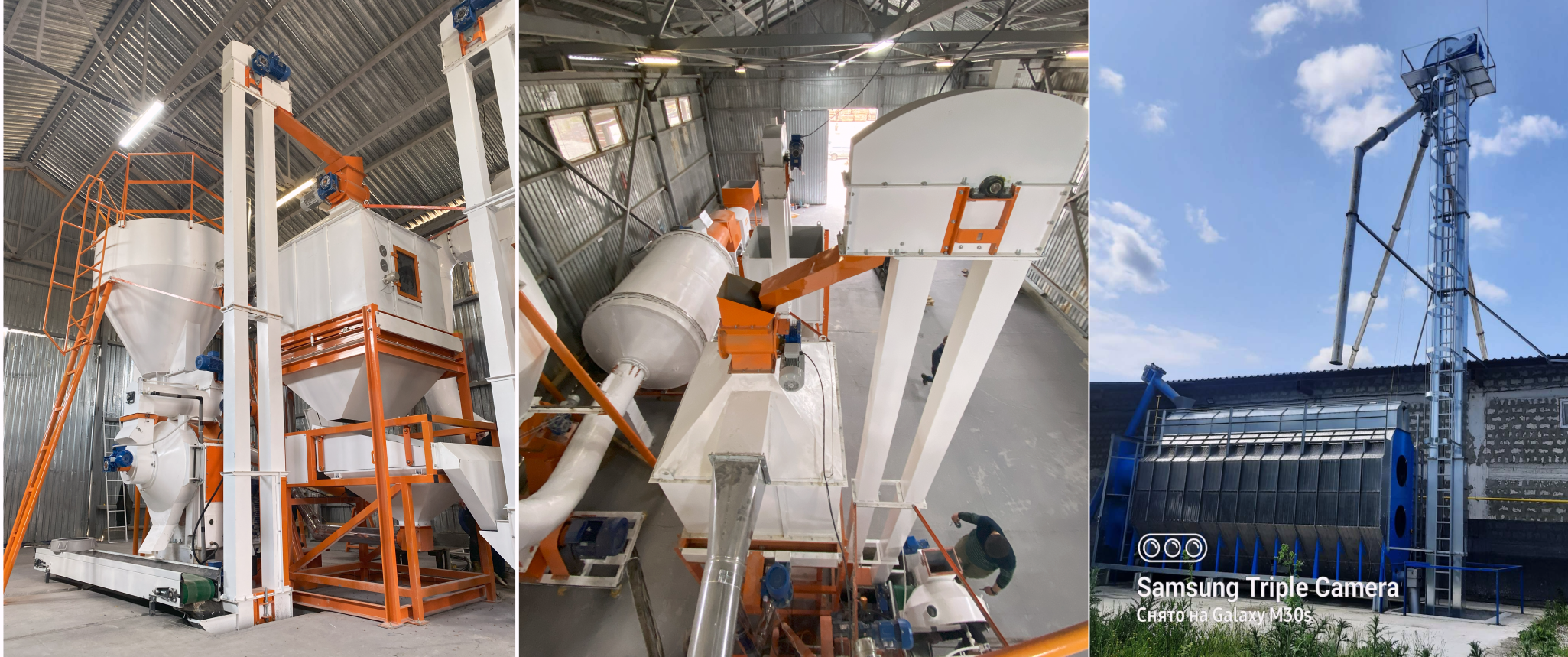Conveying Equipment.
The belt bucket elevator is a self-supporting structure designed to operate as part of a technological process with a continuous duty cycle. It can be used both indoors and outdoors for vertical transportation of raw materials at elevators, mills, compound feed plants, and other grain-processing facilities. The elevator is suitable for handling grain, groats, flour, bran, and other bulk materials with a bulk density of 250–850 kg/m³.

Operating Principle: raw material enters the elevator boot through the feed inlet. From the boot, the material is picked up by buckets mounted on a continuous elevator belt. Loading must be performed in the direction of belt movement with the buckets. The belt with loaded buckets moves from the boot to the drive head along the square elevator casing. Due to centrifugal force, the material is discharged at the elevator head through the outlet spout. The belt with empty buckets then returns to the boot for reloading.
The bucket elevator consists of the following main assemblies and mechanisms:
-
Boot
-
Boot housing
-
Feed inlet
-
Slide gate
-
Tensioning device
-
Tension pulley
-
Drive head
-
Drive head housing
-
Drive pulley
-
Gear motor
-
Belt with buckets
The boot consists of the housing, tensioning device, tail pulley, feed inlet, and slide gate. The boot housing is a partially welded and partially bolted structure featuring a single feed inlet for product input. The feed inlet is located on the front side of the bucket elevator (where the buckets move upward inside the casing). This configuration ensures minimal energy consumption. The boot is also equipped with a slide gate for adjusting the amount of material being fed.
The tension pulley with the mounted belt is positioned into its working state using the tensioning device, which adjusts the pulley upward or downward via two threaded rods.
The drive head consists of a housing, casing, drive pulley, and gear motor. The drive head housing is a fully welded structure. Inside, the drive pulley is mounted on support bearings. A discharge spout is located at the bottom, while the drive is mounted externally. The discharge spout is typically positioned at the rear of the drive head, where the buckets unload material by centrifugal force.
A worm gear motor is used as the drive and is mounted directly onto the shaft of the drive pulley.
The bucket belt is a closed-loop element enclosed within tubes and tensioned around the pulleys.